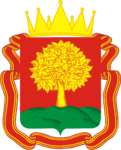Regional flags and emblems


Established 6 January 1954
Capital Lipetsk
The Lipetsk Region is part of the Central Federal District
Area 24,000 sq km
Population 1 107 800 (2025)
Ethnic groups
(2020 National Census, %)
Russian – 96,68
Other – 3,32
Administrative divisions (2024)
Municipal districts – 18
City districts – 2
Rural towns – 6
Rural districts – 286
Geography and climate
The region is in the central East European Plain at the joint of the Central Russian Upland and the Oka-Don Lowland. The region’s western part is a high plain 262 m above sea level dissected by river valleys, ravines and gulches, whereas the eastern part is a flat barely dissected lowland plain 170 m above sea level with a large number of round depressions.
At its widest points, the territory is 200 km north to south and 150 km east to west.
It borders on the Kursk, Oryol, Tula, Ryazan, Tambov and Voronezh regions.
The main rivers are the Don and the Voronezh with their tributaries.
The region has a temperate continental climate. January temperatures average –5.6°C; July temperatures average +19.3°C. Average precipitation is 25 mm in January and 74 mm in July.
There are several dozen of nature reserves and sanctuaries in the Lipetsk Region. The Galichya Gora Nature Reserve and the Voronezh Reserve (a part of which lies in the region) are the most famous state nature reserves, as well as 21 state natural reserves of regional importance, and 145 monuments of nature.
Government
The legislative branch is represented by the Lipetsk Region Council of Deputies which is the permanent, representative and only body of legislative authority in the region.
The Lipetsk Region Council of Deputies has 42 deputies, with 28 of them running in single-mandate constituencies and the other 14 in the single electoral district, where winners are identified in proportion to the number of votes cast for lists of deputies nominated by electoral associations.
The current Lipetsk Region Council of Deputies was elected in September 2021. Its term expires in September 2026.
The system of executive bodies of the region includes the Governor of the Lipetsk Region, who is the highest-ranking official in the region, the Government of the Lipetsk Region, which is the region’s permanent supreme executive body, and other regional executive bodies.
The Governor of the Lipetsk Region runs the executive branch in the region, determines the structure of the executive bodies of the region, forms and heads the Government of the region. The Governor is elected for five years by Russian citizens who permanently reside in the region. The term of office of the incumbent Governor expires in September 2029.
Economy and natural resources
Industry is the largest contributor to the Lipetsk regional budget as it accounts for about 40% of the regional GDP. The region has a multi-sector economy. The metal industry, the food industry and machine building are the major industries. Manufacturing of rubber and p1astic goods, chemicals, electrical equipment is developing fast. The region’s industrial enterprises produce cast iron, rolled iron, steel, refrigerators and freezers, washing machines and agricultural machinery.
Agriculture is one of the pillars of the Lipetsk Region’s economy. The top priority development areas are beef and dairy cattle breeding, developing small businesses, creating an information and logistics infrastructure. The region fully meets its food needs with its own products. Lipetsk farmers’ products are exported to many countries in the CIS and around the world.
Industrial clusters are being established in the Lipetsk Region to ensure high economic growth and diversification of the regional economy, increasing competitiveness of the businesses, expanding their cooperation ties, broadening access to innovative technologies and creating highly productive jobs. The Lipetsk federal-level special economic zone of the industrial production type is operating in the region.
Culture and tourism
The Lipetsk Region offers its residents and visors a variety of opportunities for recreation, tourism, medical treatment, fishing and hunting.
There are small distinctive cities in Lipetsk Region among them Yelets, an ancient city with a heroic history, rich spiritual and cultural traditions, as well as Zadonsk –one of the monastery centres of Chernozemye inseparably linked with the name of the Saint Tikhon Zadonsky.
The biggest tourist attractions are such monuments of federal significance as the Presentation Church, Ascension Cathedral, Zadonsky the Nativity of Our Lady Monastery, Dormition Church, and Church of Sts. Alexander Nevsky and Mikhail of Tver.
Lipetsk mineral springs discovered in the early 19th century enjoy great popularity. Mineral water and therapeutic muds of unique composition attract thousands of Russians to the local spas.
Pilgrims from around the country and abroad come to the relics of St Tikhon of Zadonsk, and to the holy springs in the town of Zadonsk, which is reviving as a centre of the Russian Orthodox Christianity.
The region has unique nature reserves. The Galichya Gora Nature Reserve is referred to as Russia’s pearl. It is home to many rare and endangered plant and animal species listed in the Red Data Book. Equally famous are the Voronezh Biosphere Reserve, a nature reserve of international significance which partially lies in the Lipetsk Region, and the Meshchyora Experimental Forest-Steppe Plant Breeding Station, one of the country’s largest botanical gardens and arboretums.


